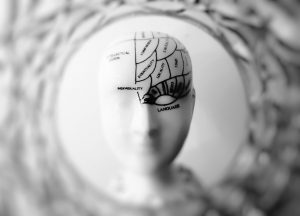Did you know that approximately 2-5% of the population experiences a condition called aphantasia, which is the inability to visualize mental imagery? Imagine closing your eyes and not being able to conjure up images of loved ones, a favorite place, or even a simple object like an apple. It may seem unimaginable, but for those with aphantasia, it’s their everyday reality. Let’s explore how to cure aphantasia.
Aphantasia can have a significant impact on a person’s life, making it challenging to engage in activities that rely on visualization, such as memory recall, creative thinking, and problem-solving. While there is no established cure for aphantasia, there are strategies and interventions that can help individuals improve their visualization abilities and unlock the power of their mind’s eye.
In this article, we will explore the impact of aphantasia, how it can be assessed and recognized, evidence-based approaches for intervention, and practical methods to address the challenge of aphantasia. We will also discuss the emotional and psychological components of aphantasia and provide a conclusion on the topic.

Key Takeaways:
- Aphantasia is a condition characterized by the inability to produce mental imagery.
- Aphantasia affects approximately 2-5% of the population.
- There is no known cure for aphantasia, but strategies and interventions can help improve visualization abilities.
- Assessments and tests are available to identify and recognize aphantasia.
- Evidence-based approaches, cognitive strategies, and visualization techniques can aid in aphantasia intervention.
Understanding Aphantasia and Its Impact
Aphantasia is a condition characterized by the inability to produce mental imagery. It extends beyond the absence of visual images and can also affect other senses such as touch and hearing. The impacts of aphantasia are far-reaching, influencing personal experiences and making it challenging to engage in activities that rely on visualization. To develop effective interventions and strategies for individuals with aphantasia, it is crucial to understand the definition of this condition and the implications it has on daily life.
Defining Aphantasia: Beyond the Absence of Mental Imagery
Aphantasia refers to the inability to create mental images, which can be a significant departure from the visualization abilities typically experienced by individuals without this condition. However, aphantasia is not solely limited to visual imagery. It can also affect the ability to imagine other sensory experiences, such as tactile sensations or auditory stimuli. Therefore, aphantasia encompasses the absence of mental imagery across multiple sensory modalities.
Aphantasia in Daily Life: How It Affects Personal Experiences
Aphantasia can have a profound impact on daily life, affecting various aspects of personal experiences. Individuals with aphantasia may struggle with tasks and activities that rely heavily on visualization, such as recalling memories, imagining future scenarios, or engaging in creative endeavors. This condition can also influence the formation of personal connections, as mental imagery often plays a crucial role in empathy and building relationships. Understanding how aphantasia affects personal experiences is essential for developing strategies to navigate and overcome the challenges posed by this condition.
| Effects of Aphantasia: | Examples: |
|---|---|
| Difficulty in recalling visual memories | Struggling to visualize faces or places from the past |
| Impaired creativity | Finding it challenging to generate visual ideas or concepts |
| Limited capacity for mental time travel | Difficulty imagining oneself in future scenarios or reliving past events |
| Reduced ability to empathize through mental imagery | Difficulty stepping into someone else’s shoes and imagining their experiences |
Assessment and Recognition: Identifying Aphantasia
Assessing and recognizing aphantasia is a crucial step in understanding and addressing this condition. Various tests and assessments have been developed to determine the presence and severity of aphantasia in individuals. These assessments help individuals understand their own experiences and provide valuable insights for researchers and clinicians.
One common method for assessing aphantasia involves the use of imagery questionnaires. These questionnaires ask individuals to visualize specific images or scenarios and rate the vividness or clarity of their mental imagery. By comparing these responses to those of individuals without aphantasia, clinicians can identify the presence of the condition.
Another approach to recognizing aphantasia is through the use of neuroimaging techniques. Functional magnetic resonance imaging (MRI) and electroencephalography (EEG) can provide insights into the neural activity associated with mental imagery. Differences in brain activity and connectivity patterns between individuals with and without aphantasia can help in identifying the condition and understanding its underlying mechanisms.
It is important to note that formal assessment and recognition of aphantasia should be carried out by qualified professionals. Self-assessment tools, such as online tests, can provide initial insights but may not offer a definitive diagnosis. Consulting with experts in the field can ensure accurate identification and appropriate interventions.
By identifying aphantasia, individuals can take the first step towards finding effective interventions and solutions. Recognizing the presence of aphantasia opens the door to exploring strategies and techniques that can help improve visualization abilities and enhance overall mental imagery skills.
Evidence-Based Approaches for Aphantasia Intervention
When it comes to addressing aphantasia, evidence-based approaches for intervention play a vital role. These approaches are grounded in scientific research and aim to improve the visualization abilities of individuals with aphantasia. In this section, we will explore the link between perception and mental imagery and discuss cognitive strategies and visualization techniques that can be used to enhance visualization skills.
Link Between Perception and Mental Imagery
Understanding the link between perception and mental imagery is crucial for developing effective interventions for aphantasia. Studies have shown that individuals with aphantasia may exhibit different patterns of brain activity compared to those without the condition. Research suggests that the inability to visualize mental imagery is related to altered activation in brain regions associated with perception and mental imagery.
By investigating and identifying these neural correlates, researchers can develop targeted interventions that aim to bridge the gap between perception and mental imagery. These evidence-based approaches can help individuals with aphantasia develop the ability to generate mental images and improve their visualization skills.
Cognitive Strategies and Visualization Techniques
Cognitive strategies and visualization techniques are core components of aphantasia intervention. These strategies aim to train the brain to bypass the visual imagery deficit and develop alternative cognitive pathways for perception and mental imagery.
One such approach is the use of cognitive strategies that involve enhancing other sensory modalities such as touch, sound, and smell to compensate for the lack of visualization. By focusing on these alternative senses, individuals with aphantasia can still create vivid mental representations and engage in activities that rely on multi-sensory processing.
Visualization techniques, on the other hand, involve systematic practice and training to improve visualization abilities. These techniques can include different visualization exercises, such as picturing vivid scenes or objects in the mind’s eye. By consistently practicing visualization techniques, individuals with aphantasia can strengthen their ability to generate mental images.
It is important to note that the effectiveness of cognitive strategies and visualization techniques may vary among individuals. What works for one person may not work for another. Therefore, it is essential to tailor interventions to meet the specific needs and abilities of each individual with aphantasia.

Table: Summary of Evidence-Based Approaches for Aphantasia Intervention
| Approach | Description |
|---|---|
| Sensory Substitution | Enhancing other sensory modalities to compensate for the lack of visualization |
| Mindfulness and Meditation | Using mindfulness techniques to cultivate present-moment awareness and enhance mental imagery |
| Cognitive-Behavioral Therapy | Addressing negative thoughts and beliefs related to aphantasia and developing adaptive cognitive strategies |
| Brain Rewire Programs | Structured training programs designed to rewire the brain and enhance visualization abilities |
| Positive Affirmation | Using positive self-talk and affirmations to reframe perceptions and enhance visualization skills |
The table above provides a summary of evidence-based approaches for aphantasia intervention. These approaches, including sensory substitution, mindfulness and meditation, cognitive-behavioral therapy, brain rewire programs, and positive affirmation, offer potential strategies for individuals with aphantasia to improve their visualization abilities.
How to Cure Aphantasia: Addressing the Challenge
While there is no known cure for aphantasia, there are ways to address the challenges it presents. This section will explore different treatment options and approaches to help individuals with aphantasia improve their visualization abilities. From sensory substitution to mindfulness and relaxation techniques, various methods can be used to work towards a cure for aphantasia.

Other Mindfulness Methods:ManthanHub Brain Rewire
ManthanHub Positive Affirmation
- Sensory Substitution: This technique involves training other senses to compensate for the lack of mental imagery. By focusing on touch, hearing, or smell, individuals can enhance their overall sensory experience.
- Mindfulness and Meditation: Practices such as mindfulness and meditation can help individuals with aphantasia develop a heightened sense of awareness and improve their ability to focus on present sensations and experiences.
- Visual Imagery Exercises: Engaging in deliberate visualization exercises, even if the images are not visually clear, can help stimulate the brain’s visualization processes and potentially improve mental imagery abilities.
- Cognitive-Behavioral Therapy: This therapeutic approach can help individuals with aphantasia by addressing any negative thoughts or emotions related to their condition and providing strategies for coping with the challenges it poses.
- Social Support and Peer Groups: Connecting with others who have aphantasia can provide a sense of validation, support, and shared experiences, easing the emotional burden of living with the condition.
While these treatments and approaches may not provide a complete cure for aphantasia, they can significantly improve an individual’s ability to visualize and navigate the challenges posed by this condition. Seeking professional guidance and support from qualified healthcare providers or therapists specializing in aphantasia can further enhance the effectiveness of these treatment methods.
Unlocking the Mind’s Eye Through Structured Training
Structured training offers a promising pathway to unlock the mind’s eye and enhance visualization abilities in individuals with aphantasia. By following practical training and exercise regimens, individuals can overcome conceptual misconceptions about visualization and tap into their innate capacity for mental imagery.
Conceptual Misconceptions About Visualization
Before embarking on the journey of unlocking the mind’s eye, it is essential to address the conceptual misconceptions surrounding visualization. One common misconception is that visualization is a talent that people are either born with or without. However, research has shown that visualization can be learned and developed through practice and training.
Another misconception is that visualization is limited to creating vivid, detailed images akin to watching a movie in one’s mind. In reality, visualization encompasses a broader spectrum, ranging from a sense of spatial awareness to the ability to evoke emotions and sensations associated with an imagined scenario.
By debunking these misconceptions, individuals with aphantasia can begin to cultivate a more accurate understanding of visualization and the growth potential.
Practical Training and Exercise Regimens
To unlock the mind’s eye and improve visualization capabilities, individuals with aphantasia can engage in practical training regimens specifically designed to stimulate mental imagery. These regimens focus on activating and strengthening the brain pathways associated with visualization.
One effective training method is the use of guided imagery exercises. These exercises involve mentally picturing specific scenes or scenarios, gradually progressing from simple objects to complex landscapes. By repeatedly engaging in guided imagery, individuals can enhance their ability to form mental images and develop greater clarity and detail in their visualizations.
Visualization exercises can also be combined with other mindfulness methods that promote brain rewiring and cognitive flexibility. ManthanHub Brain Rewire and ManthanHub Mindfulness are two examples of comprehensive programs that integrate visualization techniques with meditation and mindfulness practices to stimulate the mind’s eye.
Additionally, incorporating positive affirmations into daily routines can assist in rewiring the brain and fostering a positive mindset towards visualization. ManthanHub Positive Affirmation is a resource that provides affirmations specifically tailored to support the development of visualization abilities.
By adhering to these practical training and exercise regimens, individuals with aphantasia can progressively unlock the mind’s eye and experience the transformative power of visualization.
Emotional and Psychological Components in Aphantasia
Aphantasia not only affects individuals on a physical and cognitive level but also has significant emotional and psychological implications. Living with aphantasia can result in a range of emotions, including frustration, sadness, and a sense of loss.
One of the key emotional components of aphantasia is the inability to visualize cherished memories and experiences. People with aphantasia may struggle to recall the visual details of important life events, leading to feelings of sadness and nostalgia.
The impact of aphantasia on mental health should also be acknowledged. The inability to create mental images can contribute to feelings of isolation and disconnection from others, as visual memories and imagination play a crucial role in personal and social interactions.
Furthermore, individuals with aphantasia may experience self-doubt and a lack of confidence in their creative abilities. The inability to visualize can make it challenging to engage in activities such as art, writing, or problem-solving that rely heavily on mental imagery.
It is essential to address the emotional and psychological aspects of aphantasia when providing support and treatment. By acknowledging and validating the emotional challenges associated with aphantasia, individuals can develop coping strategies and seek therapy or counseling to navigate these difficulties.

In addition to traditional therapy approaches, other mindfulness methods can be beneficial. ManthanHub Brain Rewire, ManthanHub Mindfulness, and ManthanHub Positive Affirmation are examples of practices that can help individuals with aphantasia develop emotional resilience and foster a positive mindset.
Conclusion
In conclusion, aphantasia is a condition that affects the ability to produce mental imagery. While there is currently no known cure, there are strategies and interventions that can help individuals improve their visualization abilities. By understanding aphantasia, assessing and recognizing it, and implementing evidence-based approaches, individuals with aphantasia can work towards unlocking the power of their mind’s eye.
It is essential to address the emotional and psychological components of aphantasia and provide support for individuals living with this condition. By integrating other mindfulness methods such as ManthanHub Brain Rewire, ManthanHub Mindfulness, and ManthanHub Positive Affirmation into their daily routine, individuals can learn to navigate the challenges associated with aphantasia and find a sense of empowerment in managing their condition.
While more research and exploration are needed to find more effective treatments and solutions, it is crucial to continue supporting and advocating for individuals with aphantasia. By promoting understanding, awareness, and access to resources, we can create a more inclusive society that embraces the full spectrum of human perceptual experiences.
FAQ
Can aphantasia be cured?
Currently, there is no known cure for aphantasia. However, there are strategies and interventions that can help individuals improve their visualization abilities.
How rare is aphantasia?
Aphantasia is relatively rare, with estimated prevalence rates ranging from 2% to 5% of the population.
How can aphantasia be assessed and recognized?
There are various tests and assessments that have been developed to determine the presence and severity of aphantasia. These assessments can help individuals understand their own experiences and provide insights for researchers and clinicians.
What are some evidence-based approaches for aphantasia intervention?
Research has shown that cognitive strategies and visualization techniques can be used to train the brain and improve visualization abilities in individuals with aphantasia.
Are there any treatments or remedies for aphantasia?
While there is no known cure for aphantasia, there are various methods that can be used to address the challenges it presents. From sensory substitution to mindfulness and relaxation techniques, there are options for working towards improving visualization abilities.
How can individuals with aphantasia improve their visualization abilities?
By engaging in structured training and exercises, individuals with aphantasia can work towards unlocking the power of their mind’s eye. These training regimens can help overcome barriers to visualization and enhance visualization skills.
What are the emotional and psychological aspects of aphantasia?
Living with aphantasia can have emotional and psychological implications. This section explores the emotional challenges of aphantasia, the impact it can have on mental health, and strategies for coping with these challenges.




